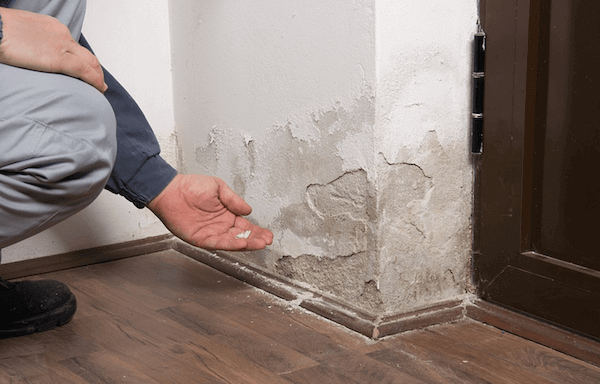Do's & Don'ts of Water Damage.
Do's & Don'ts of Water Damage.
Blog Article
The writer is making a number of great points on the subject of What You Can Do At Home To Prevent Fire And Water Damage in general in this great article down below.

Water offers life, yet water breach on some components where it's not expected to be can lead to damage and also trouble. If the water leaks into your framework, it can peel off away the surface and deteriorate the product's foundation. Mold and mildew as well as mold likewise thrive in a moist atmosphere, which can be unsafe for your and your family's health and wellness. Furthermore, residences with water damages smell old as well as mildewy.
Water can come from numerous sources like hurricanes, floods, burst pipelines, leakages, and also sewer issues. It's far better to have a functioning understanding of safety preventative measures if you have water damages. Here are a couple of guidelines on just how to take care of water damage.
Do Prioritize Residence Insurance Coverage Coverage
Seasonal water damages can originate from floodings, seasonal rains, and wind. There is also an event of an unexpected flood, whether it originated from a malfunctioning pipe that suddenly breaks into your residence. To safeguard your home, obtain house insurance that covers both disasters such as natural tragedies, and emergency situations like broken plumbing.
Do Not Forget to Shut Off Energies
When disaster strikes as well as you remain in a flood-prone area, turn off the primary electric circuit. Turning off the power avoids
When water comes in as water serves as a conductor, electric shocks. Do not forget to turn off the primary water line valve as a method to stop more damage.
Keep your furnishings stable as they can relocate around and also create additional damage if the floodwaters are getting high.
Do Keep Proactive as well as Heed Weather Signals
If you live in an area pestered by floodings, remain proactive and prepared at all times. Listen to the news as well as discharge cautions if you live near a body of water like a lake, creek, or river .
Don't Neglect the Roofing System
Your roofer needs to take treatment of the defective gutters or any kind of other indicators of damages or weakening. An evaluation will certainly avoid water from moving down your walls and also soaking your ceiling.
Do Take Note Of Tiny Leaks
A ruptured pipe does not take place in a vacuum cleaner or overnight. There are warnings that can draw your interest and also indicate to you some weakened pipelines in your house. Signs of red flags in your pipelines include gurgling paint, peeling off wallpaper, water streaks, water spots, or dripping audios behind the wall surfaces. There are signs that the pipeline will certainly burst. If you see these signs, do not wait for a rise. Repair work and also inspect your plumbing fixed before it leads to huge damages to your house, funds, and an individual nightmare.
Do Not Panic in Case of a Burst Pipe
Timing is vital when it comes to water damages. If a pipeline ruptureds in your residence, immediately shut off your main water valve to reduce off the source and avoid more damage. Call a reliable water damage restoration professional for aid.
Water offers life, however water invasion on some parts where it's not supposed to be can result in damages as well as hassle. In addition, residences with water damages odor old and also stuffy.
Seasonal water damages can come from floods, seasonal rainfalls, and wind. Indications of red flags in your pipes include bubbling paint, peeling off wallpaper, water touches, water spots, or leaking sounds behind the wall surfaces. If a pipeline bursts in your home, instantly closed off your primary water shutoff to reduce off the source and also stop more damages.
Some Do's & Don't When Dealing with a Water Damage
DO:
Make sure the water source has been eliminated. Contact a plumber if needed. Turn off circuit breakers supplying electricity to wet areas and unplug any electronics that are on wet carpet or surfaces Remove small furniture items Remove as much excess water as possible by mopping or blotting; Use WHITE towels to blot wet carpeting Wipe water from wooden furniture after removing anything on it Remove and prop up wet upholstery cushions for even drying (check for any bleeding) Pin up curtains or furniture skirts if needed Place aluminum foil, saucers or wood blocks between furniture legs and wet carpet Turn on air conditioning for maximum drying in winter and open windows in the summer Open any drawers and cabinets affected for complete drying but do not force them open Remove any valuable art objects or paintings to a safe, dry place Open any suitcases or luggage that may have been affected to dry, preferably in sunlight Hang any fur or leather goods to dry at room temperature Punch small holes in sagging ceilings to relieve trapped water (don't forget to place pans beneath!); however, if the ceiling is sagging extremely low, stay out of the room and we'll take care of it DO NOT:
Leave wet fabrics in place; dry them as soon as possible Leave books, magazines or any other colored items on wet carpets or floor Use your household vacuum to remove water Use TV's or other electronics/appliances while standing on wet carpets or floors; especially not on wet concrete floors Turn on ceiling fixtures if the ceiling is wet Turn your heat up, unless instructed otherwise

As a devoted reader on Keeping Your Home Safe This Holiday Season, I figured sharing that piece of content was important. Do you know about someone else who is excited by the niche? Do not hesitate to share it. I praise you for your time. Visit again soon.
Report this page